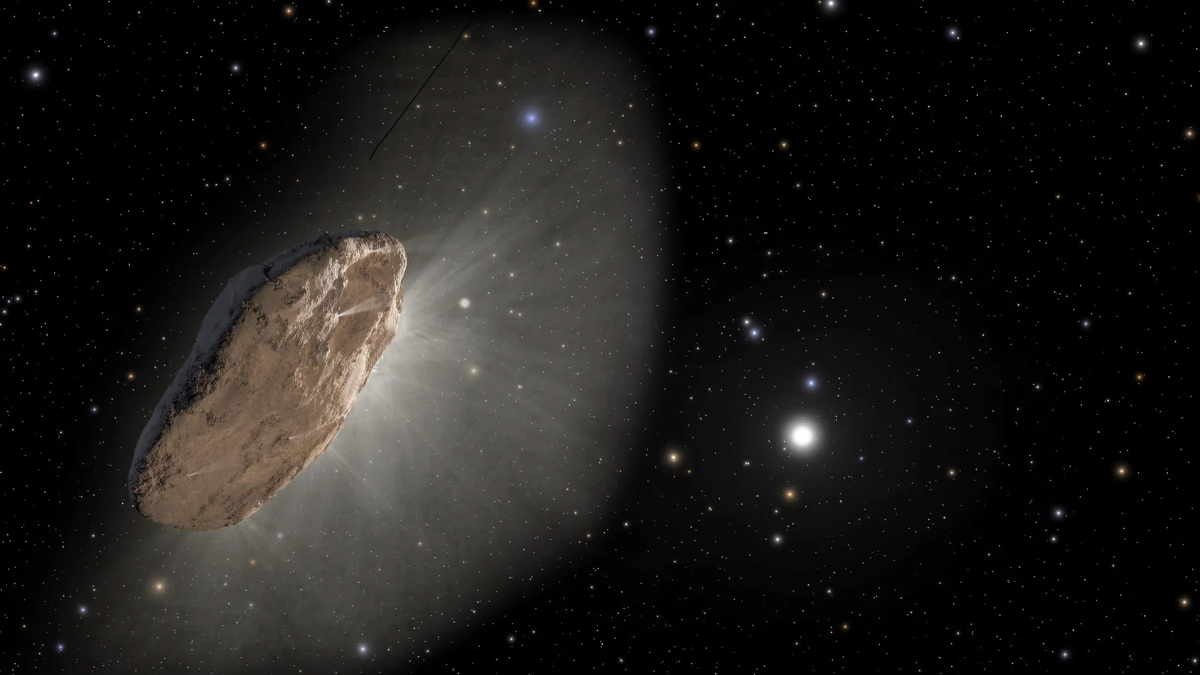[ad_1]
In 2017, ‘Oumuamua appeared in the sky as the first confirmed interstellar object. We still aren’t entirely certain what ‘Oumuamua was—though we can be mostly certain it wasn’t an alien spacecraft. Scientists have proposed some exotic explanations for ‘Oumuamua’s behavior, including that it was a fragment of a dwarf planet or a mountain of hydrogen ice. A new study offers a more straightforward proposal.
When sky-watchers detected ‘Oumuamua, it was already on its way out of the solar system. It was moving so fast there was no chance of launching a mission to study it up close. So, we were left with a handful of observations. The object, which was either cigar or pancake-shaped, exhibited non-gravitational acceleration but didn’t have a visible tail like a comet. No one has come up with a satisfactory explanation for that property that matches the available data.
Jennifer Bergner, an astrochemist from the University of California, Berkeley, initially didn’t have much interest in ‘Oumuamua. She tells NPR that her curiosity was piqued by the increasingly elaborate hypotheses about the object’s composition. Bergner developed an alternative proposal, which is the subject of the newly published study.
According to the study in Nature, ‘Oumuamua may have started its existence as a typical water ice comet. As it drifted through space for untold eons, it would have been exposed to cosmic radiation. Little by little, that radiation would split water molecules into hydrogen and oxygen. If the hydrogen was trapped in pockets, it could escape when the object neared the sun, giving it a small amount of thrust. This idea is appealing because it requires no exotic materials or new mechanisms.

‘Oumuamua was already heading away from us when it was detected in late 2017.
Credit: Wikimedia/CC4.0
Bergner and co-author Darryl Seligman analyzed the available data and have determined that the idea holds water—or hydrogen, in this case. The amorphous water ice in deep space has a “fluffy” structure with empty pockets that could trap liberated hydrogen gas. As the ice warms up, the surface can form fissures and holes that allow the hydrogen to escape and give the object a little nudge in the opposite direction. This would have been invisible from Earth, which explains why we didn’t detect any outgassing.
The mysteries of ‘Oumuamua will probably stay mysterious. However, scientists might be able to understand better what they saw in 2017 by analyzing more interstellar objects. The Vera C. Rubin Observatory will be online next year, and astronomers believe its high resolution and wide field of view will be able to spot a new interstellar object every year.
[ad_2]
Source link

